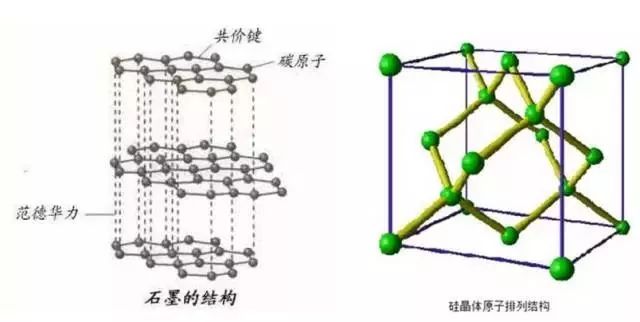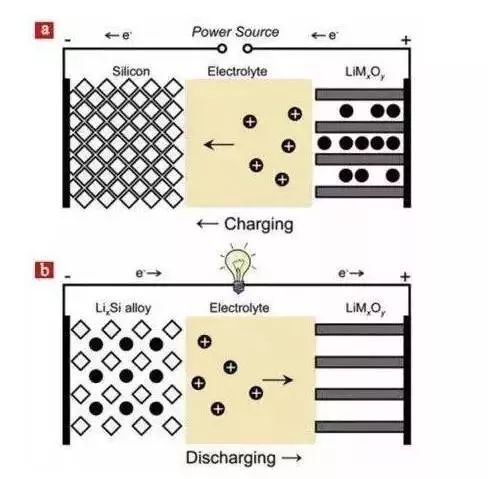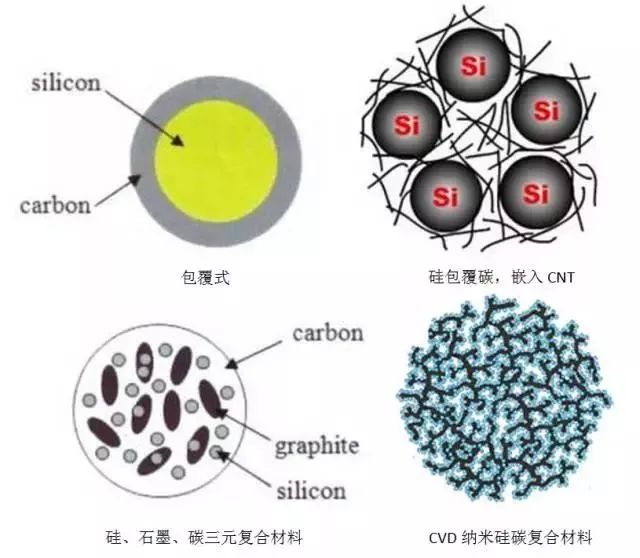The battery cover plate is a square-shell battery cover that seals the bare cell core and isolates it from the outside. Each square-shell battery consists of a cover plate and a shell. The cover plate mainly includes a cover plate, a positive and a negative pole, explosion-proof. Valves, flip the film in several parts.
The structure of silicon is different from the graphite layered structure (as shown in the figure below). The energy storage mechanism is similar to that of metal materials by alloying and dealloying with lithium ions. The charge and discharge electrode reactions can be written as follows:
Si+xLi++xe-→LiXSi

The simple substance of silicon as the negative electrode material is the principle of battery charge and discharge as shown in the figure below:

From the figure, we can see some of the clues, when charging lithium ions from the positive electrode material embedded in the crystal lattice between the internal silicon, resulting in a great expansion (about 300%), the formation of silicon lithium alloy. Discharge of lithium ions from the lattice between the discharge, but also formed a large gap.
The use of silicon crystals alone as a negative electrode material easily produces the following problems:
First, in the process of deintercalation, the volume of the silicon crystal changes significantly. This volume effect can easily cause the silicon negative electrode material to peel off from the current collector, resulting in the phenomenon of electrochemical corrosion and short circuit caused by the pole piece dew. Affects the safety and life of the battery.
Second, silicon and carbon are the same main group element. SEI is also formed on the silicon surface when first charging and discharging. However, the peeling caused by the volume effect of silicon can cause repeated destruction and reconstruction of SEI, thus increasing lithium. The consumption of ions ultimately affects the capacity of the battery.
Then, in order to learn from each other, what processes can be used to modify and optimize silicon? The composite treatment of silicon and other substances can play a good effect, in which silicon carbide composite material is a kind of material that is studied more.
Carbon materials are currently the most used anode materials. Carbon materials can be divided into soft carbon (graphitizable carbon), graphite, and hard carbon (amorphous carbon). The charge and discharge chemical equation can be expressed as:

The carbon negative electrode material has good cycle stability and excellent conductivity, and lithium ions have no significant influence on the interlamellar spacing, and can buffer and adapt to the volume expansion of silicon to some extent, and therefore are often used to compound with silicon.
According to the types of carbon materials, composite materials can be divided into two categories: silicon carbon composites and silicon carbon composites. The traditional composite material refers to the composite of silicon and graphite, MCMB, and carbon black. The new silicon-carbon composite material refers to the composite of silicon, carbon nanotube, graphene and other new carbon nanomaterials.
The silicon-carbon anode materials are mainly classified into cladding type, embedded type, and molecular contact type according to the distribution pattern of silicon, and are classified into particle type and thin film type according to morphology, and divided into silicon-carbon binary composite and silicon according to the number of silicon-carbon types. Carbon multiple compound. The following figure shows the different distribution of silicon carbon anode materials:

Silicon-carbon composite materials are prepared by ball milling, pyrolysis, chemical vapor deposition, sputter deposition, evaporation, and the like. The reversible capacity of the silicon carbon negative electrode prepared by the ball milling method can reach 500-1000 mAh/g. Ball milling can promote uniform mixing of the raw material particles and obtain smaller particle size, and the gap between the particles also contributes to the improvement of the cycle performance of the battery. .
High-temperature pyrolysis is a method for obtaining Si/C composites by cracking nano-silicon particles and organic precursors or directly pyrolyzing organosilicon precursors. The capacity of silicon-carbon composites produced by this method is lower than that produced by high-energy ball milling. Si/C composites, but higher than graphite, approximately 300-700 mAh/g. This is because the electrode material prepared by the pyrolysis method contains a large amount of non-electrochemically active substances, which reduces the capacity of the electrode material.
Nano-silicon particles are an early research anode material, but its disadvantage of large expansion volume effect limits its application. The composite material obtained by compounding silicon and carbon reserves the expansion space for the volume expansion of silicon, and at the same time compensates for the defects of poor silicon conductivity and unstable SEI film to a certain degree, and has obtained a wide range of battery core manufacturers. Attention and application. The anode material used by the famous automotive manufacturer TESLA launched in 2016, Modle3, is a negative electrode material made of silicon carbide, which accelerates from 0 to 60 miles per hour (about 96.6 kilometers) in only 6 seconds and has a cruising range of 215 miles (about 346 kilometers). ), interested can pay attention to the next.
24V Battery Pack ,Large Battery Pack,24 V Battery Pack,24V Lithium Ion Battery Pack
Zhejiang Casnovo Materials Co., Ltd. , https://www.casnovo-new-energy.com